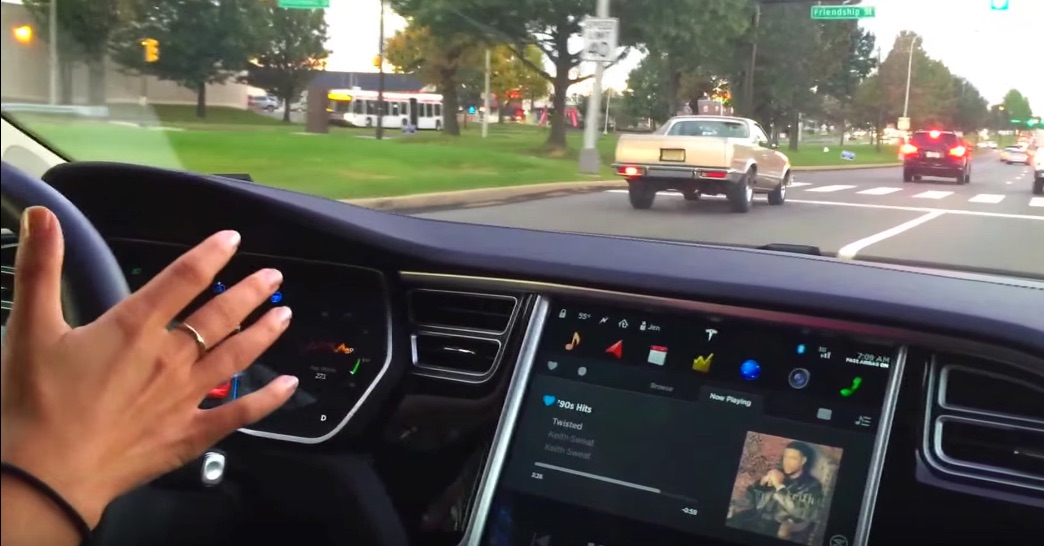

News
Tesla pits human vs. computer while cars operate in ‘Shadow Mode’
No one doubts that Elon Musk wants Tesla to be the first car company to offer fully autonomous cars to the public. After last night’s announcement that second generation Autopilot hardware, with 8 cameras and 40x more powerful computer, is now included in every car built at the Fremont factory, the question is not if Tesla will be first to market with self driving cars, but when.
As noted by white hat hacker Jason Hughes, it took a year for Tesla to activate the first version of Autopilot after the hardware was first added to production cars. New Tesla vehicles with self-driving hardware will likely see the same timeline before their vehicles become fully autonomous. But why?
I find it strange that @TeslaMotors is going to ship another #autopilot that doesn't actually work on day 1. Year wait for AP1.0 software…
— Jason Hughes (@wk057) October 20, 2016
Remember, Tesla has gotten some push back on its Autopilot system since Joshua Brown was killed on a Florida highway last May. German regulators recently sent a letter to all Tesla owners warning them that Autopilot is not a self-driving system and they must always pay close attention to their driving. The California DMV has proposed regulations that would prohibit Tesla or any other company from using the words “self driving” or “auto-pilot” in company literature.
Until this point, Tesla has been free to operate Autopilot in beta mode. Regulators have deemed it to be little more than a “super cruise control” feature. But before Tesla can activate a system that purports to offer true Level 5 autonomy, it will need to convince regulators that the system functions as advertised and is safe not only for Tesla owners but for all members of the public. That is going to require data — massive amounts of data.
New Tesla Model S and Model X automobiles will run Autopilot in “shadow mode” and collect driving data that pits a human versus computer. Autopilot vehicles running in shadow mode will not take any driving-assist or self-driving actions. Rather they will only log instances when Autopilot would have taken action and compare those results to the real life actions taken by human drivers. Musk told the press that the ultimate goal is to improve its self-driving algorithms until they are better than human drivers. By having statistical data to back up the safety of its self-driving model, Tesla will have a better chance of proving to regulators that its vision for a Tesla-powered autonomous future will be safer for humanity.
However, experts in the field of autonomous driving say billions of miles of driving will be needed to verify the validity and safety of self-driving systems. Tesla now has collected approximately 220 million miles worth of data collected from Autopilot-equipped vehicles. As Tesla wirelessly adds millions more miles of driving data collected through previous generation and new ‘Enhanced Autopilot’ enabled vehicles, the company will take a commanding lead over the rest of the automotive and transportation services industry that is just beginning to understand what the future will look like.
For Tesla owners whose cars are manufactured on or after October 19, 2016 — which will include all Model 3 sedans — they will have the satisfaction of knowing their car is capable, as Elon suggests, of driving from Los Angeles to New York City without any input from the driver, then navigating New York traffic, finding a parking spot, and parking itself all without input from a human driver. It couldn’t be a better time to be a Tesla owner, especially if you care about shaping the inevitable future.

News
Tesla’s NACS adapters hinted in code for future Apple Maps update
Apple Maps will soon warn EV owners when they need an adapter for routes that include Superchargers.
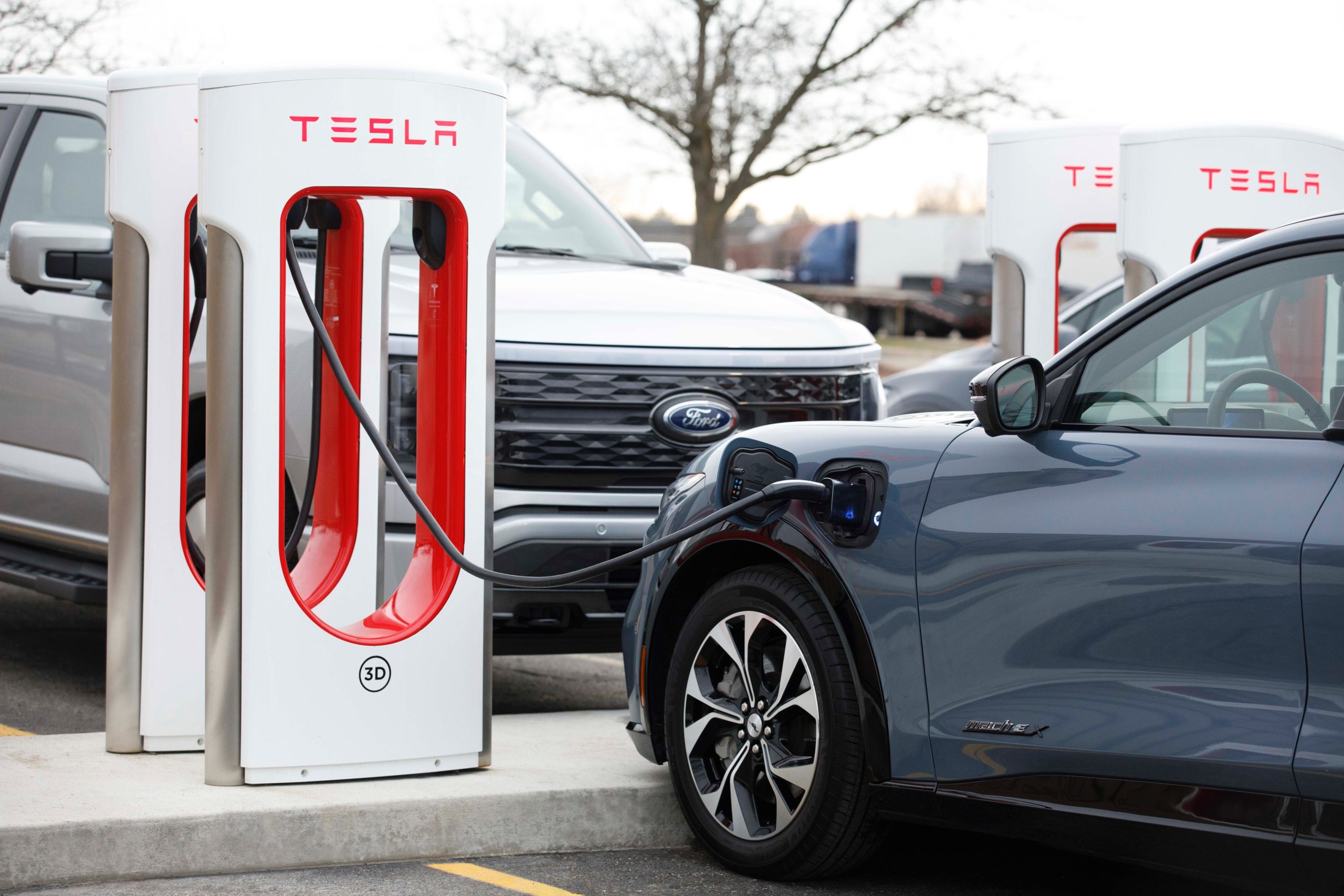
Navigation warnings referring to adapters for Tesla’s North America Charging Standard (NACS) are set to be added to Apple Maps in a future update, as spotted by one code sleuth this week.
On Monday, X user and code sleuth Aaronp613 shared code from a future iOS 18.4 beta update that includes Maps references to NACS charging adapters, warning drivers when such an adapter is required on certain navigation routes. The code looks like it includes a voice alert and heading message for the Apple Maps navigation system, which can be expected to be added in a future update.
The latest iOS version available at this time for iPhone and iPad is 18.3.1, according to Apple’s website. The anticipated update is also expected to arrive amidst increased cross-platform integration for vehicle owners, as many companies attempt to make it easier for electric vehicle (EV) owners to stay charged and keep tabs on their vehicles.
🚨 Apple looks to be prepping for the takeover of Tesla’s NACS charging connector. It will tell you if it is NACS-enabled or requires an adapter
This appears to be a feature that will be added to a future iOS version https://t.co/afD7qqsbge
— TESLARATI (@Teslarati) March 3, 2025
READ MORE ON TESLA SUPPORT FOR APPLE DEVICES: First look at Tesla’s app for the Apple Watch
Many Tesla and other-brand EV owners use an iPhone or other Apple devices, so integration between these and a person’s vehicles are becoming increasingly important. The automaker also launched an Apple Watch app as part of its holiday update in December, letting owners control their vehicles even from the wearable device.
Tesla has also been rolling out widespread access to its Supercharger network to other EV brands over the last several months, and the code is just the latest hint at updates focused on making it easier for consumers to use its charging stations. As more and more brands gain access, drivers of non-Tesla vehicles will also be using the Supercharger network in increasing volumes, making such alerts especially important for making sure new owners are informed and aware of what they might encounter on their navigation routes.
Companies across the industry announced partnerships to adopt Tesla’s NACS charging standard in future vehicle models throughout much of 2023, alongside plans to offer adapters to owners of existing vehicles with the CCS hardware.
Elon Musk
Tesla gaining with Republicans as it loses traction with Democrats: Stifel
Stifel’s Think Tank Group data has shown that Democrats’ net favorability of Tesla fell to -15% from 7% since February 2024, while Republicans’ rose to 27% from 11%.
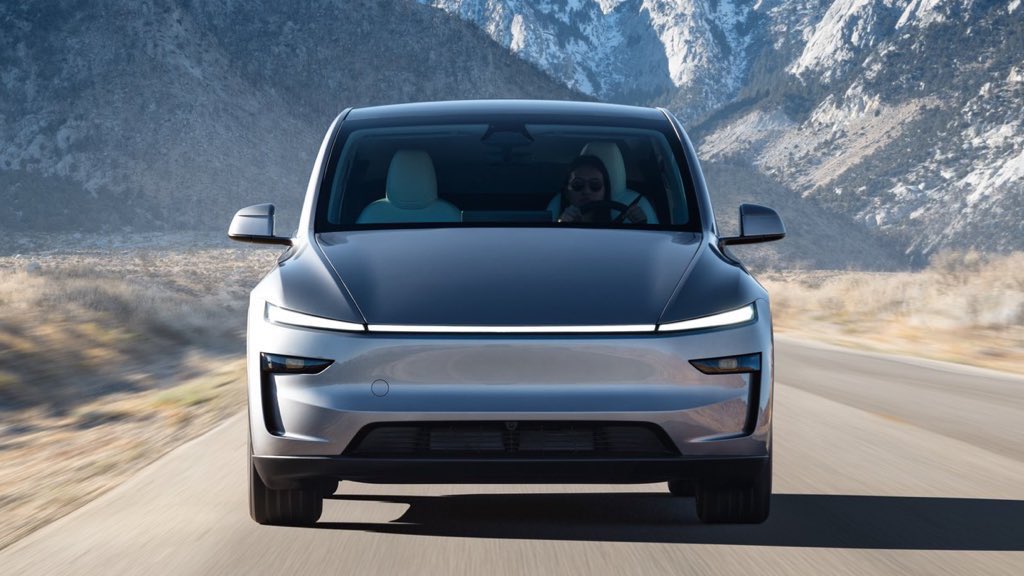
Elon Musk’s vocal support for U.S. President Donald Trump has driven a partisan divide in Tesla’s (NASDAQ:TSLA) appeal, with Democrats souring on the brand and Republicans warming to it, as per Stifel analysts led by Stephen Gengaro.
The Stifel analysts’ findings were outlined in a report from Investing.com.
Musk’s Trump support:
Elon Musk openly supported Donald Trump last year following the then-candidate’s first assassination attempt. Since Trump took power, Musk has become more involved in politics, with the CEO now leading the Department of Government Efficiency (DOGE).
Musk’s involvement in conservative politics has resulted in a wave of protests against the CEO. A number of Tesla stores have also been vandalized in recent weeks, and some have been the location of anti-Musk protests.
🚨 Tesla "losing traction" with Democrats but gaining with Republicans, Stifel says
Elon Musk’s actions are impacting how some carbuyers are approaching Tesla, according to the Stifel analysts led by Stephen Gengaro.
"There is a clear negative shift from Democrats, while… pic.twitter.com/7CwjVHGrlp— Herbert Ong (@herbertong) March 3, 2025
What Stifel analysts say:
Stifel’s Think Tank Group data has shown that Democrats’ net favorability of Tesla fell to -15% from 7% since February 2024, while Republicans’ rose to 27% from 11%. Democrats’ net purchase consideration for Tesla vehicles also dropped to -42% from -31% since Musk endorsed Trump in August, while Republicans’ improved to -13% from -26% in the same period, per Stifel.
“There is a clear negative shift from Democrats, while Republicans willingness to buy a Tesla is rising… This backlash has surfaced anecdotally and on social media (people placing bumper stickers on their Tesla’s claiming they love the car, but not Elon, and other variations),” the analyst noted.
Potential Headwinds:
Genaro noted that Republican interest in Tesla might offset some Democratic losses for the electric vehicle maker. However, there might be “some near-term headwinds” from Musk’s role, China’s fierce competition, and the company’s transition from the Model Y classic to the new Model Y. A 45.2% year-on-year sales drop in the EU in January—against a 37% rise in regional EV sales—was also dubbed by the analysts as a “worrisome trend,” as it could potentially be “highlighting a shift in consumer preference away from Tesla toward other manufacturers.”
News
Anti Elon Musk protester attacks Polestar after mistaking it for a Tesla
Witnesses noted that prior to the attack, the man was waving a homemade sign slamming Elon Musk and Tesla.

A man described as being in his 40s decided to express his frustration against Elon Musk by attacking one of the CEO’s all-electric vehicles in central Bristol, England.
Unfortunately, the man did not seem to be too familiar with Teslas at all, or even how they looked like. As a result, he ended up attacking and damaging a Polestar electric vehicle instead.
The attack:
As could be seen in videos taken of the attack, the man, seemingly fueled by anti-Elon Musk fury, grabbed a “big pole” and smashed the unfortunate Polestar. The man damaged the Polestar quite a bit, breaking several of the electric car’s windows and seemingly damaging some body panels.
Witnesses noted that prior to the attack, the man was waving a homemade sign slamming Elon Musk and Tesla, as noted in a Daily Mail report.
Man smashes e-car to protest Elon Musk, but mistakes Volvo for Tesla. pic.twitter.com/DNq6UmPS2j— Daily Mail Online (@MailOnline) February 27, 2025
Police catch protester, then releases him:
Avon and Somerset Police arrested the pole-wielding man on suspicion of criminal damage, arson, and carrying an offensive weapon in public, though they later released him under investigation.
A local, who initially mistook the racket for fireworks, told authorities that the protester “wasn’t trying to do a runner.” “I thought, it must be some kind of protest,” the local noted.
“I was shocked. When you’re trying to go to sleep on a Monday evening, the last thing you expect to hear is a bloke smashing up a car,” the local added.
Indeed, it was a protest. A protest against the wrong car.
Sign’s Musk Rant:
The protester’s sign is quite rambling, reading: “Eleon Musk you have to pay for all that demolition and seven a trillion dollars for foundation Wielka Orkiestra Witecznej Pomocy,” referring to a Polish charity, The Great Orchestra of Christmas Charity, for no clear reason.
-
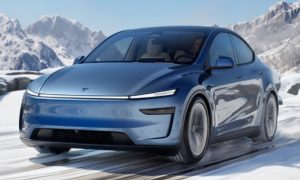
 News1 day ago
News1 day agoTesla’s lead designer weighs in on plans for these two Model Y colors
-
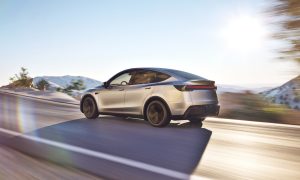
 Elon Musk9 hours ago
Elon Musk9 hours agoTesla mulls adding a new feature to fight off vandals as anti-Musk protests increase
-
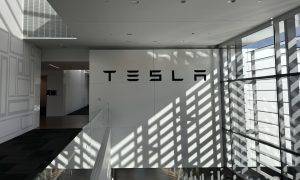
 News1 day ago
News1 day agoTesla design head reflects on over 16 years with the company
-
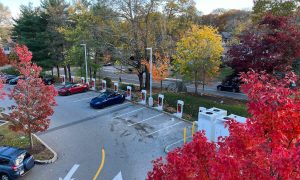
 News2 days ago
News2 days agoTesla launches 100+ Supercharger partnership with this fast food chain
-
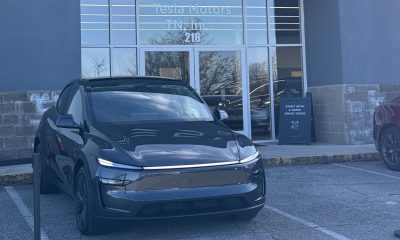
 News11 hours ago
News11 hours agoTesla starts Model Y ‘Launch Edition’ deliveries in the U.S.
-
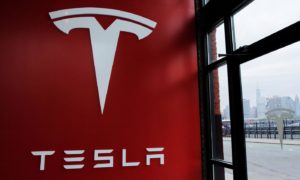
 Elon Musk1 day ago
Elon Musk1 day agoAnti-Musk protests at Tesla store in New York lead to arrests
-

 News2 weeks ago
News2 weeks agoTesla made the new Model Y cabin so quiet that now it’s looking for a fix
-
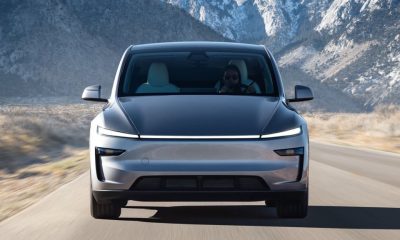
 Elon Musk8 hours ago
Elon Musk8 hours agoTesla gaining with Republicans as it loses traction with Democrats: Stifel




